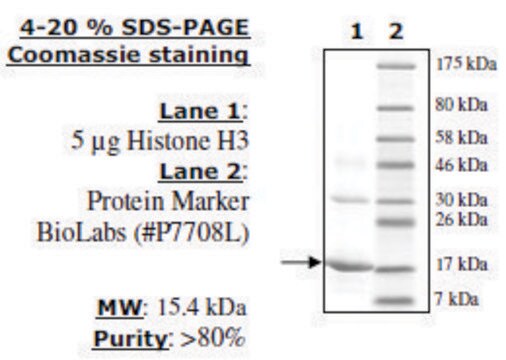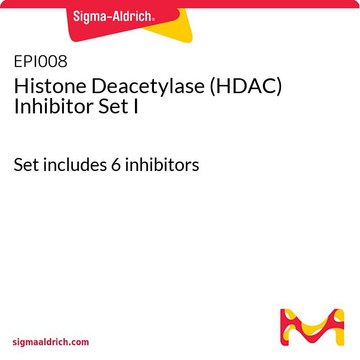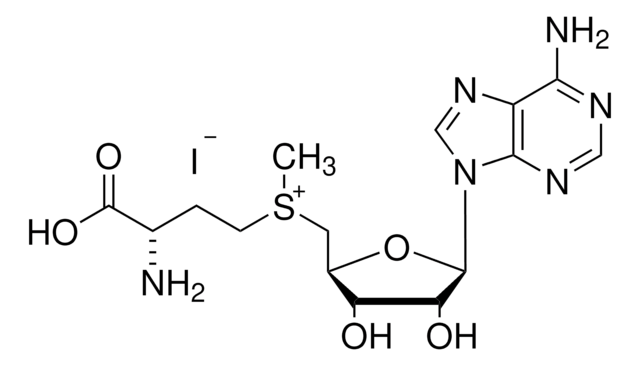SRP0126
DNMT1 Active human
recombinant, expressed in baculovirus infected insect cells, ≥50% (SDS-PAGE)
Synonyme(s) :
CXXC-type zinc finger protein 9, DNA (cytosine-5-)-methyltransferase 1, DNA MTase HsaI, MCMT
About This Item
Produits recommandés
Source biologique
human
Produit recombinant
expressed in baculovirus infected insect cells
Étiquette/Marqueur
GST tagged (N-terminal)
Pureté
≥50% (SDS-PAGE)
Forme
aqueous solution
Puissance
≥50
Poids mol.
211 kDa
Conditionnement
pkg of 10 μg
Fabricant/nom de marque
Sigma-Aldrich
Conditions de stockage
avoid repeated freeze/thaw cycles
Concentration
0.12 mg/mL
Technique(s)
inhibition assay: suitable
Numéro d'accès NCBI
Numéro d'accès UniProt
Application(s)
life science and biopharma
Conditions d'expédition
dry ice
Température de stockage
−70°C
Informations sur le gène
human ... DNMT1(1786)
Description générale
DNMT1 (DNA methyltransferase 1) is a member of the DNMT enzyme family which also includes DNMT2, DNMT3A, and DNMT3B. It is a multidomain protein composed of 1616 amino acids. It has a methyltransferase domain in its C-terminal, which shows sequence homology to bacterial methyltransferases. The DNMT1 gene is mapped to human chromosome 19p13.2.
Application
Actions biochimiques/physiologiques
Définition de l'unité
Forme physique
Notes préparatoires
Code de la classe de stockage
12 - Non Combustible Liquids
Classe de danger pour l'eau (WGK)
WGK 3
Point d'éclair (°F)
Not applicable
Point d'éclair (°C)
Not applicable
Certificats d'analyse (COA)
Recherchez un Certificats d'analyse (COA) en saisissant le numéro de lot du produit. Les numéros de lot figurent sur l'étiquette du produit après les mots "Lot" ou "Batch".
Déjà en possession de ce produit ?
Retrouvez la documentation relative aux produits que vous avez récemment achetés dans la Bibliothèque de documents.
Notre équipe de scientifiques dispose d'une expérience dans tous les secteurs de la recherche, notamment en sciences de la vie, science des matériaux, synthèse chimique, chromatographie, analyse et dans de nombreux autres domaines..
Contacter notre Service technique








